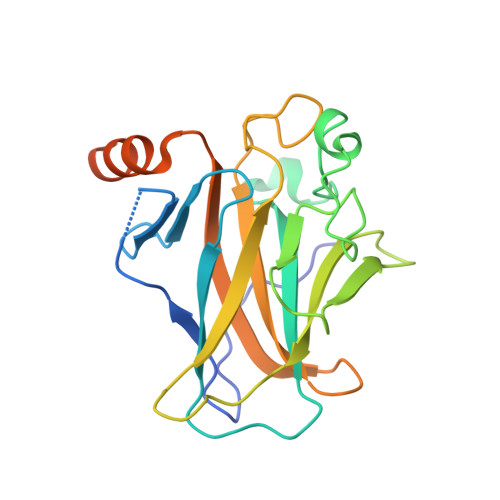Structural Basis for Understanding Oncogenic P53 Mutations and Designing Rescue Drugs.
Joerger, A.C., Ang, H.C., Fersht, A.R.(2006) Proc Natl Acad Sci U S A 103: 15056
- PubMed: 17015838
- DOI: https://doi.org/10.1073/pnas.0607286103
- Primary Citation of Related Structures:
2J1W, 2J1X, 2J1Y, 2J1Z, 2J20, 2J21 - PubMed Abstract:
The DNA-binding domain of the tumor suppressor p53 is inactivated by mutation in approximately 50% of human cancers. We have solved high-resolution crystal structures of several oncogenic mutants to investigate the structural basis of inactivation and provide information for designing drugs that may rescue inactivated mutants. We found a variety of structural consequences upon mutation: (i) the removal of an essential contact with DNA, (ii) creation of large, water-accessible crevices or hydrophobic internal cavities with no other structural changes but with a large loss of thermodynamic stability, (iii) distortion of the DNA-binding surface, and (iv) alterations to surfaces not directly involved in DNA binding but involved in domain-domain interactions on binding as a tetramer. These findings explain differences in functional properties and associated phenotypes (e.g., temperature sensitivity). Some mutants have the potential of being rescued by a generic stabilizing drug. In addition, a mutation-induced crevice is a potential target site for a mutant-selective stabilizing drug.
Organizational Affiliation:
Cambridge University Chemical Laboratory and Cambridge Centre for Protein Engineering, Medical Research Council Centre, Hills Road, Cambridge CB2 2QH, United Kingdom.















